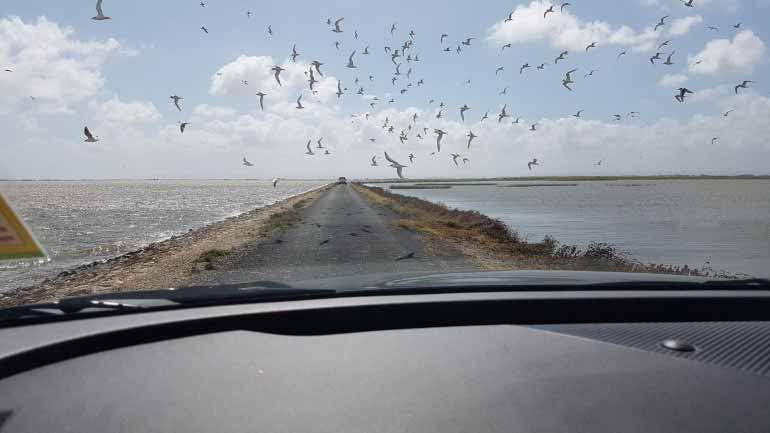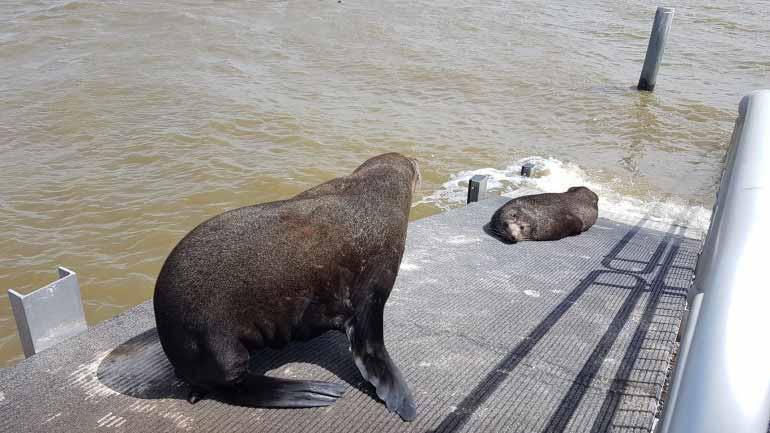The floodwaters that have moved through the River Murray in recent months have highlighted the importance of end-of-system flows for the ecology of South Australia’s Coorong, Lower Lakes and Murray Mouth (CLLMM) region.
The floods saw the barrages in the Goolwa and Hindmarsh Island region fully opened in December 2022 to enable floodwaters to pass into the Coorong and to the ocean.
Constructed in the 1940s, the 5 barrages near the Murray Mouth at Goolwa, Mundoo, Boundary Creek, Ewe Island and Tauwitchere are used to control the flow of river water through the lake system and stop highly saline water from flowing upstream into the lakes.
December was the first time in decades that all barrage gates were open, and visitors flocked to the barrages and Murray Mouth lookout to see the flood flows as they passed.
In recent years, water for the environment has played an important role in maintaining flows during dry times to the Lakes and Coorong. Flood flows, on a much bigger scale, deliver environmental benefits to the region.

Jarrod Eaton, MDBA Assistant Director, Water Quality and Salinity, recently visited the CLLMM region with other MDBA colleagues to see first-hand the impact of the flood event and hear from local community members.
“One of the key messages we received was how water for the environment has been supporting the gradual recovery of the CLLMM region. This water was recovered under the Basin Plan for exactly this job, and to support the health of the whole river system.
Fish also appear to be benefiting from the abundance of food due to the floods. To quote a commercial fisherman from Meningie, some fish species are in the best condition seen in a long time, with much higher fillet weight compared to low flow years such as 2018.”
Jarrod said water for the environment in previous years and the recent flooding have also helped to significantly reduce the level of salt in the Lower Lakes.
“If we look back to the Millennium drought at the end of the 2000s, there were elevated salinity levels in the north and south lagoons of the Coorong. The south lagoon was suffering from hyper-marine conditions, with salinity levels at some locations as high as 180,000 EC (electrical conductivity) units, which is more than 3 times saltier than seawater."
According to South Australia’s Department for Environment and Water, the ecological salinity threshold for the Coorong north lagoon is up to 53,000 EC in wet years (around seawater) and 66,000 EC in dry years. In the south lagoon the threshold is up to 85,000 EC to 130,000 EC depending on climatic conditions.
“The high end-of-system flows has flushed salt from the River Murray system into the ocean and significantly improve salinity levels in the Coorong.
Salinity levels have been much lower in 2022–23 and next year the further delivery of water for the environment will be important to maximise the water quality and salinity benefits observed in 2022–23.”

The Murray Mouth has also been a significant beneficiary of the floodwaters.
“There has been major scouring of the mouth during 2022–23, which means it is currently much wider and deeper than before the floods. Consequently, a lot of sand has been scoured without mechanical intervention by dredging."
While the recent floodwaters have delivered benefits, there can be some negative environmental impacts because of increased discharge. Elevated flows have led to a strong response from ruppia (aquatic plants), but they also limit foraging habitat for migratory birds as regular feeding areas have been inundated.
“With around 33 GL of water a day in early March flowing across the South Australian border and continuing healthy flows along the river in South Australia, the good news is that we will continue to see the connectivity between the river, Lower Lakes, Coorong and the Murray Mouth for some time to come."
